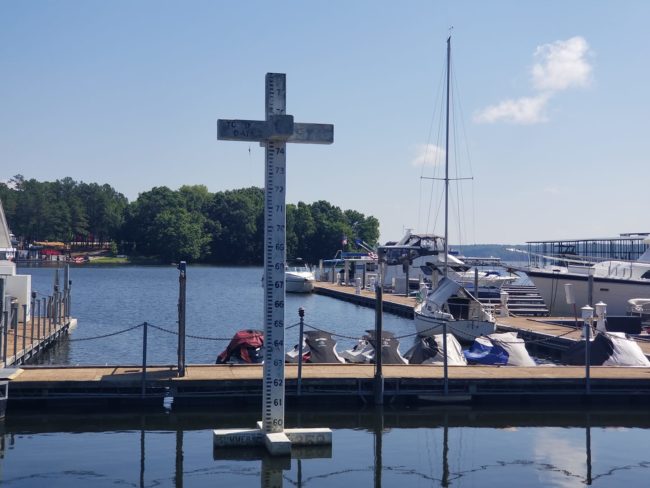
(The following was written by one of our outdoor commentators, Steve McCadams. In addition to broadcasting his Kentucky Lake reports on our radio stations, he also publishes a regular blog at KentuckyLake.com. You can listen to Steve’s weekly podcast anytime on our website. Click on Listen and podcasts.).
By Steve McCadams
Lake levels have begun falling slowly this week as it’s time for Tennessee Valley Authority’s annual drawdown to begin on Kentucky Lake.
Each year the reservoir achieves summer pool elevation of 359 (feet above sea level) on or around May 1, which is the agency’s target date. Then, just after the Fourth of July holiday period TVA implements its curve for a slow but gradual drawdown toward winter pool (354) with a target time in the mid-November range.
TVA lakes are lowered to create storage capacity. TVA’s priorities are flood control, hydro power and navigation but recreational use has been a huge benefit over the years and a byproduct one might say.
Recreational boaters, anglers, lakefront property owners and all lake users will start to notice lower lake levels in the days, weeks and months ahead. Some of the more obvious observations will be receding shoreline lake levels and those at launch ramps.
There’s still ample water for most lakers but once Labor Day comes and goes it begins to take on a different look up and down the waterway. That’s when lower lake levels take on a whole new meaning for backwater bays and main lake sandbars where shallow flats begin to alter the path and shortcuts for all boaters.
As fall approaches it’s a different lake out there. Most fishermen and pleasure boaters have learned to adjust to the drawdown schedules of TVA, which have been in place since the reservoir was impounded back in the mid 1940’s.
Several reservoirs throughout the TVA valley are under a winter drawdown schedule, although it varies dramatically from one reservoir to another. Kentucky Lake’s drawdown is five feet from summer pool to winter pool.
Some of the lakes in east Tennessee have drastic changes—some more than twenty feet— in their elevation from peak summer pool levels to their low ebb of winter pool.
How well the system is balanced is determined by measurements taken at Chickamauga Dam near Chattanooga, Tenn.—the location that provides the best indication of water flow in the upper Tennessee River system, says TVA’s website.
If the volume of water flowing into Chickamauga Reservoir is less than needed to meet systemwide flow requirements, additional water must be released from upstream reservoirs—even during summer months.
Depending on the time period and water volume, 10 tributary reservoirs are considered for water release to improve overall system flow, resulting in a slight drawdown.
When dry conditions prevail on the Tennessee River below Chickamauga Dam, it may be necessary to release additional water to meet requirements at Kentucky Dam at the end of the system.
Water may also be released from reservoirs during summer months after significant storm events to ensure adequate flood storage capacity.
Meanwhile, as to the summer fishing scene along Kentucky Lake anglers are keeping a sharp eye on the status of current these days. Anglers, especially those targeting bass and catfish, yearn for a little flow as it helps stimulate the bite.
Hot summer days are seeing surface temperatures reach the 86 to 89 degree range as of late. Most anglers rise and shine early in hopes of beating the heat as best they can. By midday it’s a grudge match out there!
A few bass fishermen have been turning to night fishing the last few weeks, dodging the hot sun in favor of a night bite as they toss everything from Texas rigged worms or hair jigs to slow rolling a big bladed spinnerbait around rap-rap shorelines or out over sloping sandbars near deep water.
A few smallmouth have been taken by night fishermen too. It’s another world out there under the cover of darkness but over the years clear water conditions plus the heat factor have steered more and more bass fishermen toward the night bite.
Some crappie anglers use floating lights at night as they too have attempted to adjust to summer fishing conditions. Anchoring or holding their position out over main lake drop-offs where some submerged structure lies below can often pay dividends.
Photo: Water gauge at Paris Landing State Park Sunday. (Shannon McFarlin photo).










